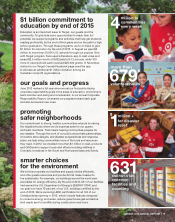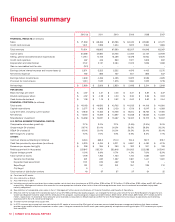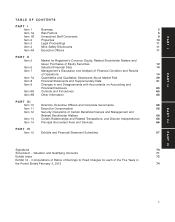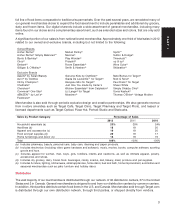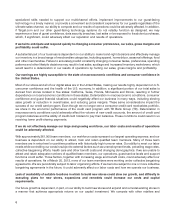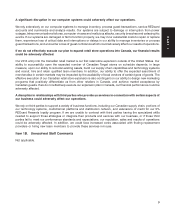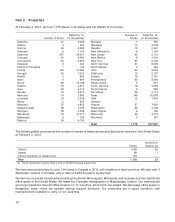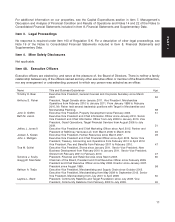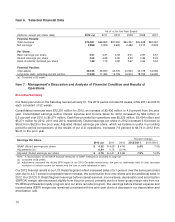Target 2012 Annual Report Download - page 21
Download and view the complete annual report
Please find page 21 of the 2012 Target annual report below. You can navigate through the pages in the report by either clicking on the pages listed below, or by using the keyword search tool below to find specific information within the annual report.
Item 1A. Risk Factors
Our business is subject to many risks. Set forth below are the most significant risks that we face.
If we are unable to positively differentiate ourselves from other retailers, our results of operations could be
adversely affected.
The retail business is highly competitive. In the past we have been able to compete successfully by differentiating
our guests’ shopping experience by creating an attractive value proposition through a careful combination of price,
merchandise assortment, convenience, guest service, loyalty programs and marketing efforts. Guest perceptions
regarding the cleanliness and safety of our stores, our in-stock levels and other factors also affect our ability to
compete. No single competitive factor is dominant, and actions by our competitors on any of these factors could
have an adverse effect on our sales, gross margins and expenses.
We sell many products under our owned and exclusive brands discussed on page 2. These brands are an
important part of our business because they differentiate us from other retailers, generally carry higher margins
than national brand products and represent a significant portion of our overall sales. If one or more of these brands
experiences a loss of consumer acceptance or confidence, our sales and gross margins could be adversely
affected.
The continuing migration and evolution of retailing to online and mobile channels has increased our challenges in
differentiating ourselves from other retailers. In particular, consumers are able to quickly and conveniently
comparison shop with digital tools, which can lead to decisions based solely on price. We have been working with
our vendors to offer unique and distinctive merchandise, and encouraging our guests to shop with confidence with
our price match policy. Failure to effectively execute in these efforts, actions by our competitors in response to these
efforts or failure of our vendors to manage their own channels and content could hurt our ability to differentiate
ourselves from other retailers and, as a result, have an adverse effect on sales, gross margins and expenses.
Our continued success is substantially dependent on positive perceptions of Target which, if eroded, could
adversely affect our business and our relationships with our guests and team members.
We believe that one of the reasons our guests prefer to shop at Target and our team members choose Target as a
place of employment is the reputation we have built over many years for serving our four primary constituencies:
guests, team members, the communities in which we operate and shareholders. To be successful in the future, we
must continue to preserve, grow and leverage the value of Target’s reputation. Reputational value is based in large
part on perceptions of subjective qualities. While reputations may take decades to build, even isolated incidents
can erode trust and confidence, particularly if they result in adverse mainstream and social media publicity,
governmental investigations or litigation. Those types of incidents could have an adverse impact on perceptions
and lead to tangible adverse effects on our business, including consumer boycotts, lost sales, loss of new store
development opportunities, or team member retention and recruiting difficulties.
If we are unable to successfully develop and maintain a relevant and reliable multichannel experience for our
guests, our reputation and results of operations could be adversely affected.
Our business has evolved from an in-store experience to interaction with guests across multiple channels (in-store,
online, mobile and social media, among others). Our guests are using computers, tablets, mobile phones and other
devices to shop in our stores and online and provide feedback and public commentary about all aspects of our
business. We currently provide full and mobile versions of our website (Target.com), applications for mobile phones
and tablets and interact with our guests through social media. Multichannel retailing is rapidly evolving and we must
keep pace with changing guest expectations, and new developments and technology investments by our
competitors. If we are unable to attract and retain team members or contract with third parties having the
5
PART I


